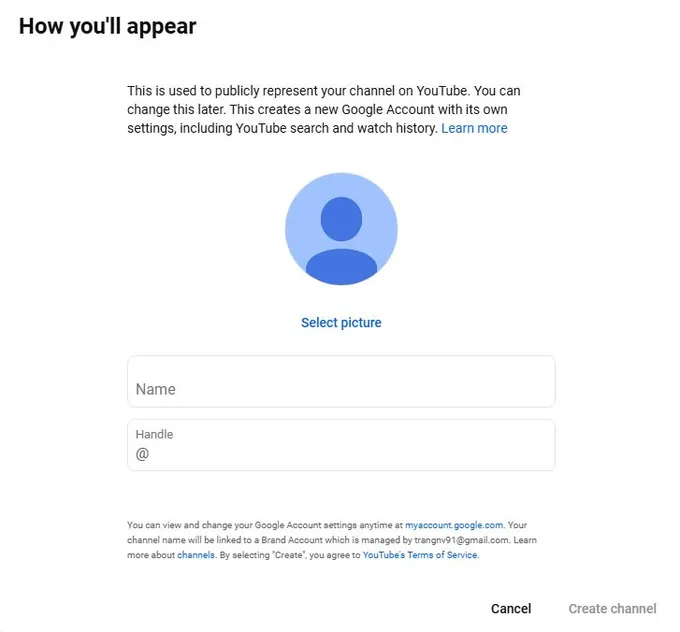Creating a successful YouTube channel can be simplified by leveraging artificial intelligence (AI) tools. In this post, I will provide you with actionable steps to replicate a successful YouTube channel using AI, focusing on content creation, automation, and optimization for maximum engagement and monetization.
Step 1: Identify Your Niche
1.1 Research Successful Channels
- Explore YouTube: Start by browsing YouTube to find channels within your areas of interest. Look for channels that consistently generate high views and engagement.
- Use Analytics Tools: Utilize tools like TubeBuddy or VidIQ to analyze competitors’ channels. These tools provide insights into video performance, audience demographics, and trending topics.

1.2 Analyze Content Styles
- Content Formats: Take note of the types of videos (e.g., tutorials, reviews, vlogs) that perform well in your niche.
- Engagement Strategies: Observe how successful channels engage their audience. Look for patterns in their video titles, thumbnails, and descriptions.
Step 2: Set Up Your YouTube Channel
2.1 Create Your Channel
- Sign In to YouTube: Go to YouTube and sign in with your Google account.
- Create a Channel: Click on your profile picture, select “Your Channel,” and follow the prompts to create a new channel.

2.2 Optimize Your Channel
- Channel Name: Choose a memorable name that reflects your niche and is easy to spell.
- Channel Description: Write a compelling description that includes relevant keywords (e.g., “Replicate a Successful YouTube Channel Using AI”) to improve SEO.
- Branding Elements: Add a profile picture and banner that align with your brand identity.
Step 3: Utilize AI Tools for Content Creation
3.1 Script Generation
- Using ChatGPT: Open ChatGPT and input prompts like:
-
- “Generate a script for a YouTube video about [your topic] that is engaging and informative.”
- Ask for specific lengths or styles to match your target audience’s preferences.
3.2 Voiceovers and Visuals
- Voiceover Generation: Use tools like ElevenLabs or Descript for high-quality AI-generated voiceovers.
- Visual Creation: Use platforms like Big Motion AI or Canva to create engaging visuals. For animated content, consider using tools like Animaker or Vyond.

Step 4: Focus on Topic Selection
4.1 Identify Trending Topics
- Keyword Research: Use tools like Google Trends, Ahrefs, or the YouTube search bar to find popular keywords related to your niche.
- Competitor Analysis: Look at the most viewed videos from competitors and identify common themes or topics.

4.2 Validate Your Topic Choices
- Create a list of potential topics and validate them by checking their performance metrics on similar channels.
Step 5: Enhance Viewer Engagement
5.1 Craft Compelling Hooks
- Start each video with an intriguing question or statement that captures attention immediately. For example:
- “Have you ever wondered how some channels make over $19,000 a month?”
5.2 Maintain Engagement Throughout the Video
- Use storytelling techniques, visuals, and interactive elements (like polls) to keep viewers engaged.
- Include clear calls-to-action (CTAs) encouraging viewers to like, comment, and subscribe.
Step 6: Automate Publishing and Promotion
6.1 Schedule Video Releases
- Use YouTube’s scheduling feature to plan your uploads in advance. Consistency is key for building an audience.
6.2 Promote Across Social Media Platforms
- Link your social media accounts (Facebook, Twitter, Instagram) to automatically share new videos.
- Use tools like Hootsuite or Buffer for additional scheduling and promotion strategies.

Step 7: Monitor Performance and Optimize
7.1 Analyze Your Video Metrics
- Regularly check YouTube Analytics for insights into views, watch time, audience retention, and engagement rates.
- Identify which videos perform best and analyze why they succeeded.
7.2 Adjust Your Strategy Based on Data
- If certain topics or formats perform better than others, adjust your content strategy accordingly.
- Experiment with different video lengths, styles, and posting times based on audience feedback.
Step 8: Monetization Potential
8.1 Explore Monetization Options
- Once you meet the eligibility requirements (1,000 subscribers and 4,000 watch hours), apply for the YouTube Partner Program.
- Consider additional revenue streams such as affiliate marketing by promoting products related to your niche.
Conclusion
Replicating a successful YouTube channel using AI is not only feasible but also efficient when you follow these detailed steps. By automating content creation processes and focusing on engaging topics, you can grow your channel effectively. Embrace the power of AI to enhance productivity while delivering content that resonates with viewers – leading to increased engagement and potential monetization.
Related Posts
- Kroto Coupon – 92% OFF Kroto Lifetime Deal from Appsumo
- NEURONwriter Black Friday Sale 2024 – 50% Off on Annual Plans
- Ad Alchemy Discount 93% Off – Ad Alchemy Lifetime Deal only $79 – Onetime Payment
- Veeroll Review 2025: Is Veeroll the Ultimate AI Video Creation Tool?
- Browse AI Black Friday Sale 2024: SAVE up to 60% on Annual Plans – Limited Time Offer!
